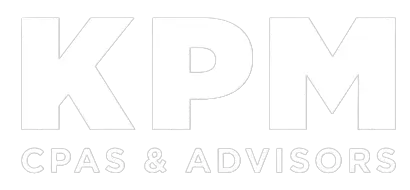In 2008, the Mental Health Parity and Addiction Equity Act (MHPAEA) was enacted. Its chief mandate is to prevent group health plans and health insurance issuers from imposing more restrictive financial requirements and treatment limitations on mental health and substance use disorder (MH/SUD) coverage than they do on medical/surgical benefits.
Under the Consolidated Appropriations Act of 2021, the MHPAEA was amended to reinforce that mandate and add stricter compliance measures for employers and insurers. On September 9, 2024, three federal agencies — the U.S. Departments of Health and Human Services, Labor, and the Treasury — issued final rules implementing the MHPAEA’s amended and new regulations.
Self-Funded Plans
For employers, the impact of the final rules will largely depend on whether you sponsor a self-funded or fully insured health plan. Let’s start with the former.
Under a self-funded plan, the sponsoring employer assumes the financial responsibility and risk for paying claims. If this holds true for your organization, you’ll have to comply with stricter requirements to verify that your MH/SUD benefits are as equally accessible as your medical/surgical benefits. These requirements focus largely on nonquantitative treatment limitations (NQTLs), which are nonmonetary restrictions placed on the scope or duration of benefits. Examples include:
- Prior authorization
- Medical necessity
- Step therapy or “fail-first” requirements
- Reimbursement rates
To demonstrate the adequacy of your NQTLs, you’ll have to conduct tests called comparative analyses. These tests involve documentation processes, evidentiary standards, and explanations of factors used to apply NQTLs. Eventually, you’ll also have to show that your comparative analyses include real-world outcomes of NQTL applications. These may include the number and percentage of claim denials for MH/SUD vs. medical/surgical services.
There’s also a “network adequacy” requirement. That is, your provider network for MH/SUD services must be just as robust as your provider network for medical/surgical services.
Data collection will be critical once the final rules take effect. You’ll need to be able to assess how your NQTLs are impacting plan participants’ access to MH/SUD services. This will involve calculating various metrics, including the utilization rate.
To meet the network adequacy requirement, you’ll need to be able to show equivalency between your MH/SUD and medical/surgical networks. If you detect inconsistencies, you’ll have to take corrective action such as adding MH/SUD providers or offering more telehealth-based care for MH/SUD. Noncompliant plans may face penalties.
Fully Insured Plans
Under a fully insured health plan, an insurance company assumes the financial responsibility and risk for paying claims. If this describes your organization’s arrangement, you can breathe a little easier — though you’re not completely off the hook.
Your insurer will indeed have to jump through the aforementioned hoops (and others) to comply with the final rules. This includes regularly conducting comparative analyses of NQTLs and submitting written reports to the appropriate federal agency.
But, as the plan sponsor, you’re still partly responsible for compliance, namely regarding:
- Creating and maintaining a plan design with acceptable NQTLs
- Working with your insurer to help ensure parity between MH/SUD and medical/surgical benefits
You’re also, of course, responsible for choosing a reputable insurer in the first place.
One concern raised by employers and insurers alike about the final rules is that the increased administrative burden on insurance companies will drive up their costs. In turn, they may pass along those increases to customers through higher premiums.
Develop Your Strategy
Most of the requirements set forth under the final rules apply for plan years beginning on or after January 1, 2025. However, others don’t take effect until plan years beginning on or after January 1, 2026.
Legal challenges could delay one or both of those effective dates. Nonetheless, whether your organization sponsors a self-funded plan or a fully insured one, now’s the time to work with your professional advisors to learn about the MHPAEA and the final rules. Contact us for more information or for help developing your compliance strategy.

